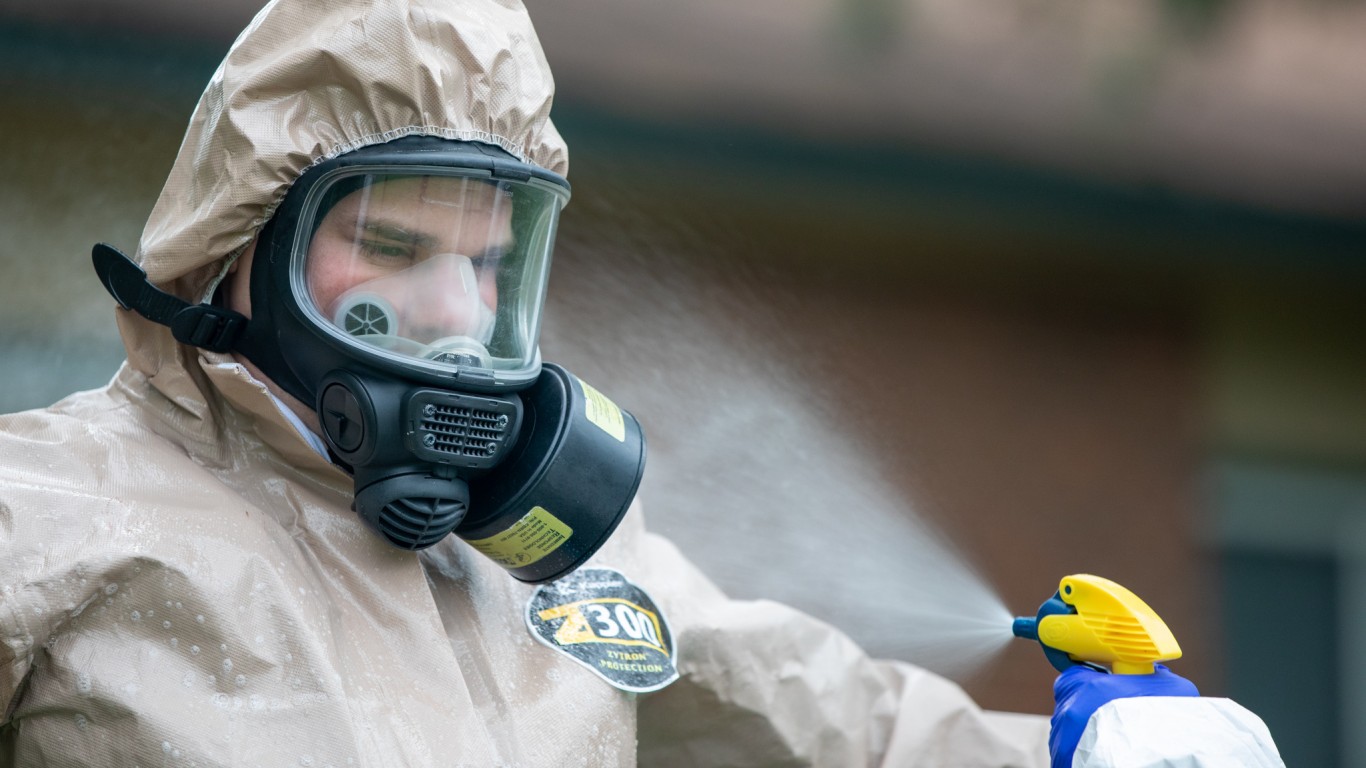Health and Healthcare
COVID-19: The Most Dangerous County in the Most Dangerous State

Published:

Recent developments in the spread of COVID-19 in America have offered mixed news. The numbers of confirmed and fatal cases have fallen for days. However, mutations and low vaccine rates have alarmed experts and threaten to rekindle the rapid growth of the disease among the U.S. population. At 26,524,218 confirmed cases, America has about a quarter of the world’s figure. The fatal case count of 447,715 is about a fifth of the world’s total. These numbers stand against America’s reputation as among the most advanced nations in the world based on medical research and patient treatment.
The spread of the disease usually takes into account total cases, fatalities and hospitalizations by state and county. Vaccination figures were recently added. The national figure for people who have received at least one dose of a vaccine has reached a relatively small 8%.
Another measure of the spread and severity of COVID-19 by state and county is cases and deaths per 100,000 people measured by a seven-day average. This allows experts to compare areas regardless of population size. In the pandemic’s early stages, these numbers were highest in New York (particularly New York City) and in the Chicago, Boston and Detroit areas. The high counts then moved west and south, eventually to the Plains States of North and South Dakota. Most recently, Alabama, Arizona and South Carolina have taken the brunt of the disease, based on deaths per 100,000 people.
The state that is worst off based on deaths per 100,000 people is Alabama. It is at a seven-day average of 2.91 coronavirus fatalities. In Hale County, the figure is much worse: a staggering 10.73. The county is in the west-central part of the state, toward the Mississippi border, just south of Tuscaloosa and southwest of Birmingham.
Hale County has a population of 14,809 spread across 644 square miles, which makes it sparsely populated. The residents are extremely poor, with a median household income of $34,046, about half the national average. While 40% of the population is white, nearly 60% is Black. At just over 24%, the poverty rate runs close to double the national average.
Hale County’s population makeup shows a portrait of those worst hit by the disease, as it includes the poor and minority parts of the U.S. population.
The worst of the disease can be expected to move on from Hale County to elsewhere, as it has done since the national outbreak started. However, the devastation will not go away.
Start by taking a quick retirement quiz from SmartAsset that will match you with up to 3 financial advisors that serve your area and beyond in 5 minutes, or less.
Each advisor has been vetted by SmartAsset and is held to a fiduciary standard to act in your best interests.
Here’s how it works:
1. Answer SmartAsset advisor match quiz
2. Review your pre-screened matches at your leisure. Check out the advisors’ profiles.
3. Speak with advisors at no cost to you. Have an introductory call on the phone or introduction in person and choose whom to work with in the future
Thank you for reading! Have some feedback for us?
Contact the 24/7 Wall St. editorial team.